14. Avatar (2009) Dir. James Cameron
Camera: Fusion Camera System
![]()
Jake Sully (Sam Worthington) is recruited to take the place of his twin brother in the military’s Avatar program. Through biotechnology Jake is able to embody the native species of the planet (Na’ vi) he has been commissioned to serve on. His mission is to gain the trust of the native species in order to harvest the rare “unobtainium” from under their woodland hamlet.
During this acclimation, he learns to respect and admire the native species more than the greedy and exploitative mining companies. In order to protect his newfound family and home, he must embody the Na’ vi in body and spirit.
A familiar story with roots going back to Thomas Berger’s “Little Big Man”, Avatar should be well known to most by now. It is featured here exclusively due the brilliantly inventive use of digital technology to create something new for the audience experience. It is the first film shot with 3D cameras, screened in 3D, and was the first IMAX 3D film to be nominated for the Best Picture Oscar; as well as being the highest grossing film of all time.
Claudio Miranda won the Oscar for Best Cinematography for his work on Avatar.
15. Life of Pi (2012) Dir. Ang Lee
Camera: Arri Alexa
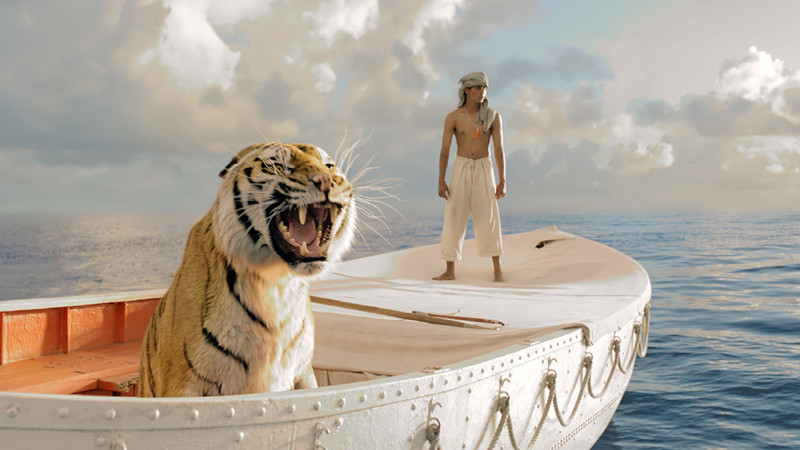
Pi Patel (Irrfan Khan/Suraj Sharma) tells his life story to a writer (Rafe Spall) in search of a man who has a story which will make him believe in God. The story describes Pi’s family Zoo being moved to Canada, but during the journey, the boat sinks leaving Pi stranded on a lifeboat with an array of various animals. Primal nature is revealed and explored as Pi and a tiger named Richard Parker struggle to survive while marooned at sea.
The journey leads them to an island saturated with life, almost as if a higher power has extended a helping hand to these two weary travelers. The altruistic nature of the island causing him to be at peace with his fate, Pi Patel heads back out into the sea, being rescued some time later.
Life of Pi is a big film, visually speaking, which required an industrial water tank to film the scenes at sea, with the surrounding environment chroma-keyed in post. Perhaps spurred on by the experimental mentality of digital cinema, Ang Lee included aspect ratio changes in two places in the film, something he wanted to do since film school.
Visually stunning and immersive, Life of Pi demonstrates the masterful level to which digital visual effects have been elevated. With Oscar wins for Best Directing and Best Picture, an established foothold and growing dominance of digital formats over film has firmly been established.
16. Che: Part One (2008) Dir. Steven Soderbergh
Camera: Red One M
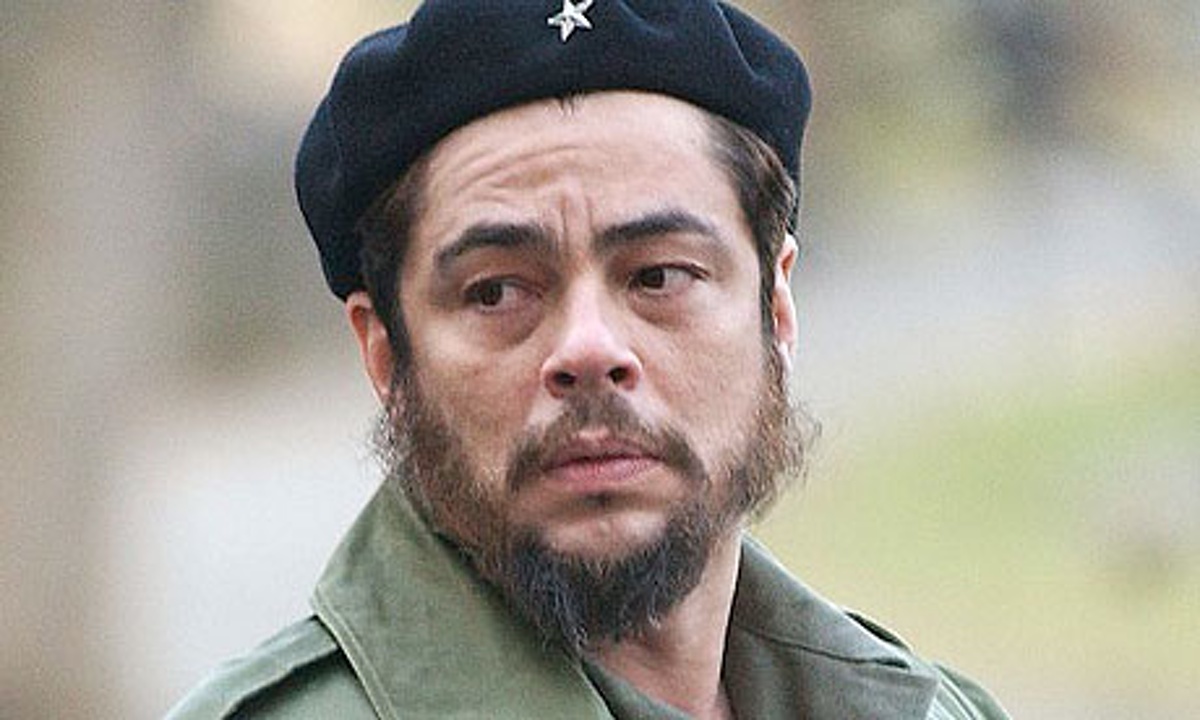
Ernesto Che Guevara is a well known name and films have been made about his life before; but this one captures an intimate snapshot of a significant time in his life. Che: Part One follows Ernesto (Benicio del Toro) while he functions as one of Fidel Castro’s (Demian Bichir) Lieutenants during the Cuban revolution.
The audience is immersed in the campaign from the jungle to the streets of Havana during Batista’s coup. The news-footage style of filming is constructed with long shots and a high exposure contrast, reminiscent of field reporters during the battle scenes. This news-footage style is persistent throughout the film, with simple chromatic tint changes to differentiate scenes and establish moods-a convention dating back to the era of Silent film.
The first feature length film to be shot on the now-legendary Red One Camera makes Che: Part One a fascinating look into the early days of the digital cinema revolution.
The freedom offered by lack of camera equipment combined with the limited color and exposure latitude commonplace in earlier digital films to provide the audience with not only an intimate snapshot of a time in Che Guevara’s life, but also an intimate snapshot of the adolescent stage of digital cinema.
17. Gravity (2013) Alfonso Cuaron
Camera: Arri Alexa
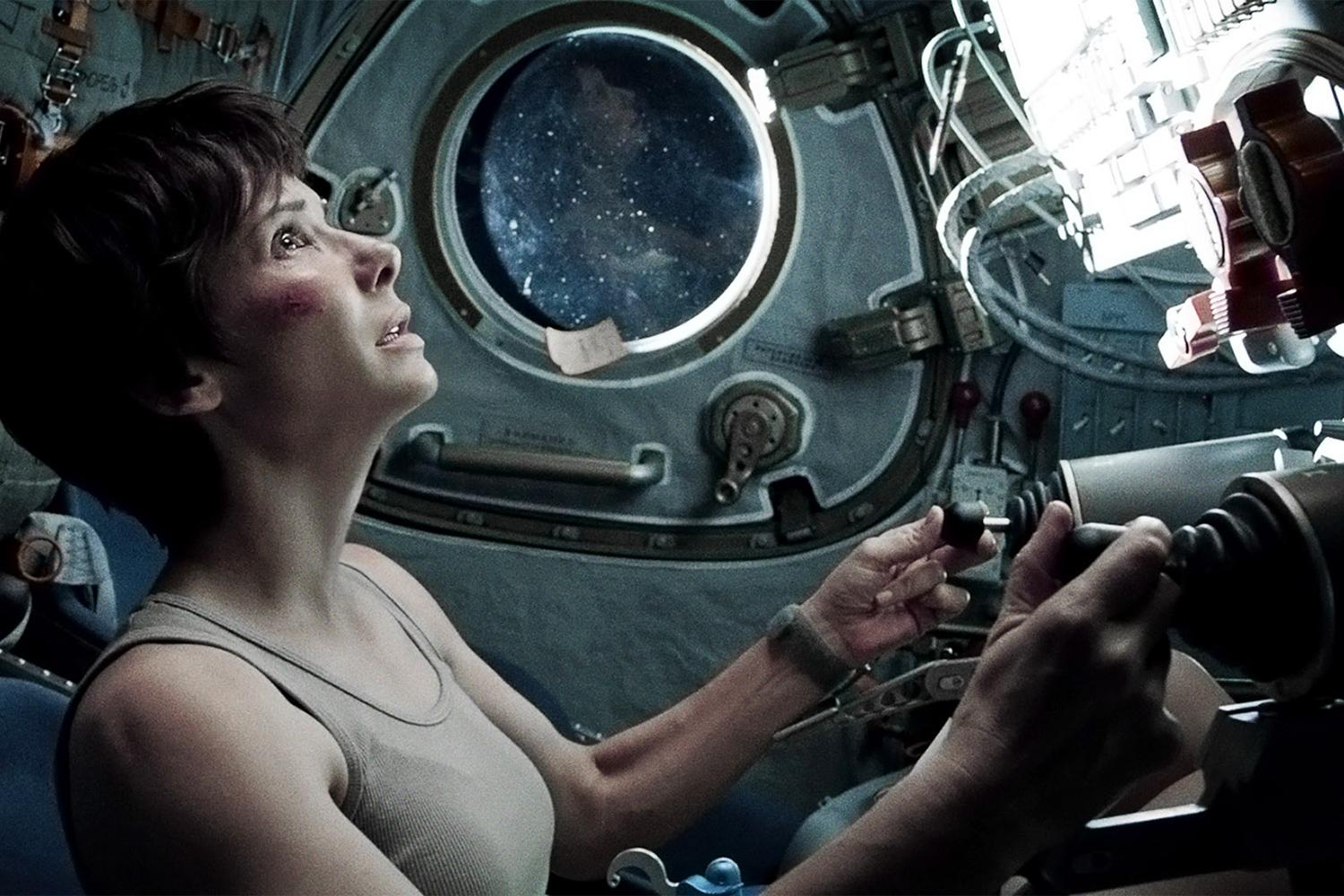
A small crew of Astronauts is sent into orbit to perform repairs and maintenance on an orbiting satellite. After a rapidly moving and highly destructive cloud of debris Dr. Ryan Stone (Sandra Bullock) and Astronaut Matt Kowalski (George Clooney) end up tethered together floating in orbit toward a neighboring space station as their only chance for salvation. In the course of outrunning the debris field’s pursuit through orbit Dr. Ryan gains redemption illustrated by visual metaphors of rebirth.
To accurately capture the actor’s faces during the space walk sequences, a “Light Box” was made out of LED’s folding together. The desired effect of the Light Box is to surround and reflect the desired images and light onto the actors directly. Complicated rigging systems of cameras were also made to capture the unconventional way in which the characters travel through and appear in the frame.
The technical achievements of this production illustrate how the ever-changing landscape of digital film produced inventions by way of necessity. The resulting visual feats add validity to the ongoing pursuit and development of supporting technologies related to digital cinema.
18. Russian Ark (2002) Dir. Aleksandr Sokurov
Camera: Sony CineAlta F900
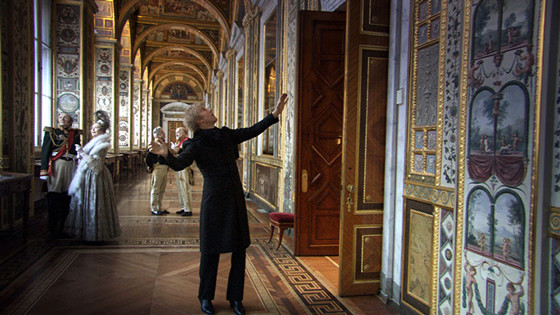
The entire film shot through the point of view of an unseen protagonist accompanied by a man referred to as “The European”. It is one continuous shot, and is one flowing festival of immersive choreography, history and Russian culture; and the audience experiences all this through the eyes of an unseen man.
More of a marvelous cinematic piece of performance art than a narrative film, Russian Ark is proof positive of digital cinema’s ability to astound and transfix audiences in ways unachievable with film.
Russian Ark had only one day of principal photography (four takes were needed) and suffered from the fact that the director only speaks Russian and the Director of Photography only speaks German. Despite this, the film’s auspicious use of digital formats earns it a place among the early pioneers of those films which pushed the boundaries and tried something new.
An earlier noteworthy attempt to create a similar film was Alfred Hitchcock’s Rope (1948). In order to guise the magazines running out, Hitchcock would push in to someone’s back and black out the lens, then pull back out hiding the cut between. In this sense Russian Ark gives filmmakers the ability to not only create new things but achieve what was impossible before digital cinema.
19. The Blair Witch Project (1999) Dir. Daniel Myrick, Eduardo Sanchez
Camera: RCA Hi-8 Camcorder
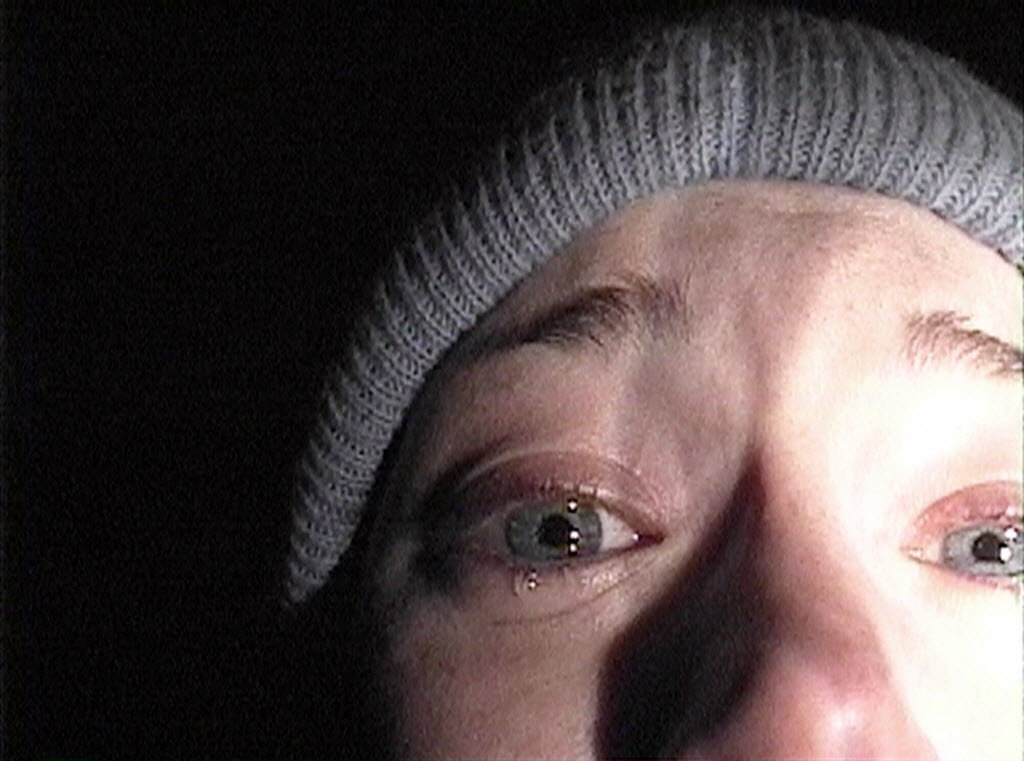
Three student filmmakers begin their investigation of a known local folk legend: The Blair Witch. The further they venture into the woods in question, the more they find themselves lost, sabotaged, and psychologically disturbed. When their only shred of hope, the map, is lost the group spirals out of control leaving three people missing and only and ominous shroud of mystery remaining.
Although this movie features the use to 16mm footage, the primary story told through the video-aesthetic of early digital films is enough to earn it a place of consideration in the timeline of digital cinema’s rise to prominence. During the height of the Dogma 95 movement, this lone American film was shot on a digital format. Not only that, but was well received critically and was a financial success. All that and this film also gave birth to a new modality of the Horror genre.
The first mainstream “Found Footage Film”, The Blair Witch Project used the existing digital formats available and presented the world with a different kind of film. It spawned a sub-genre of Horror, effective in its haunting stoicism and astoundingly inexpensive to make. The financial success made this a kind of film that would not only be replicated and have its fair share of derivations, but is a sub-genre of primarily digital films that is here to stay.
20. Sin City (2005) Dir. Robert Rodriguez, Frank Miller, and Quentin Tarantino
Camera: Sony CineAlta F950
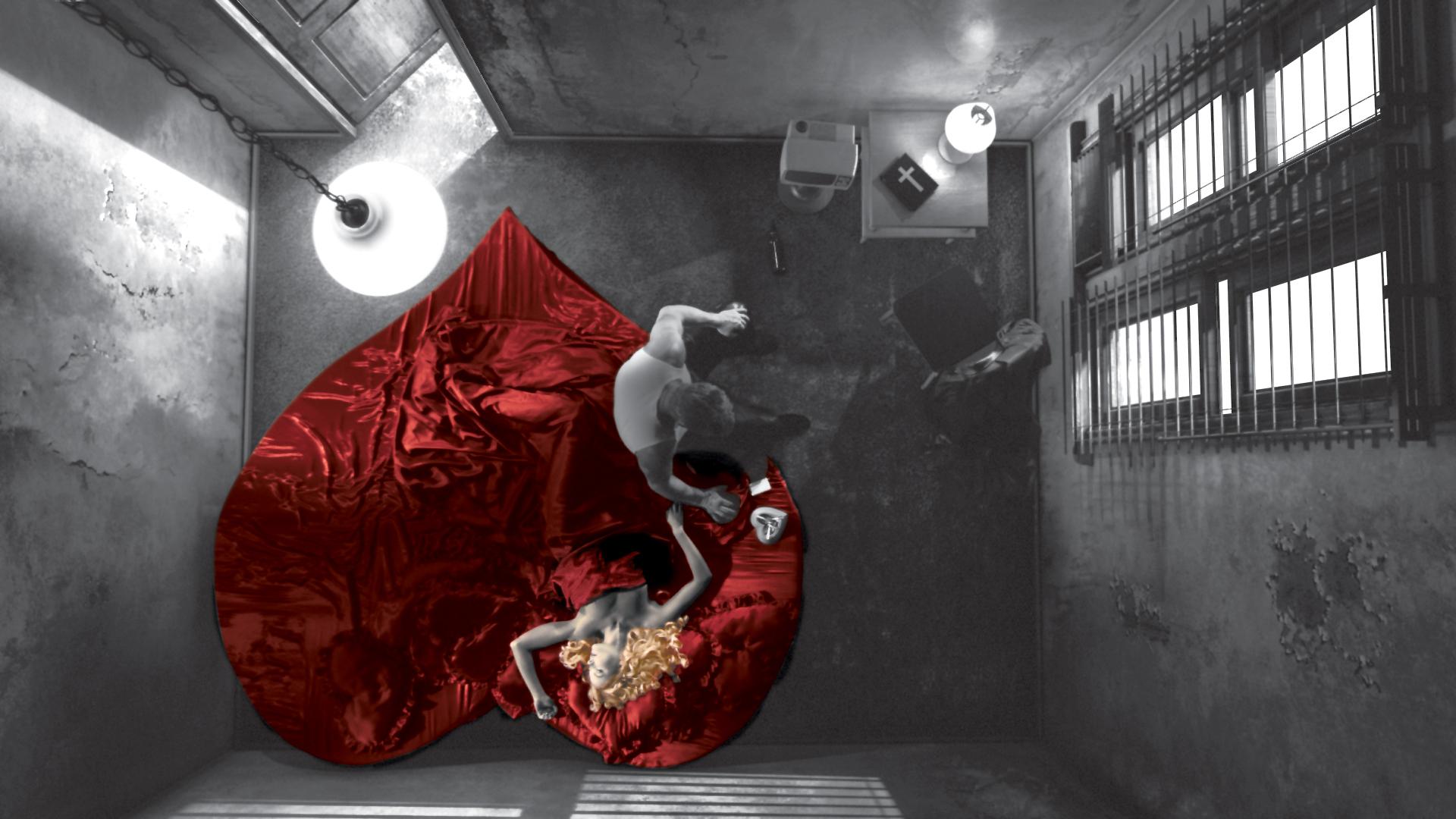
Sin City is Frank Miller’s story of three different protagonists and their dealings with the corrupt and overbearing figureheads in toxic city. From organized crime to political officials and religious leaders, they seek vengeance and stability for the city’s criminal underworld.
A film directed by Robert Rodriguez, Special Guest Director Quentin Tarantino (Dwight (Clive Owen) driving Jackie Boy (Benicio del Toro) to the tar pits), and Frank Miller seems as if it would result in a scattered final product. The connecting thread is the three Director’s ability to coordinate and similarly use the technology to achieve the desired hyper noir-saturated look.
This across the board dedication to the film’s aesthetic is demonstrated by Robert Rodriguez omitting the writing credits out of the movie due to his belief that the film is less of an adaptation of the graphic novel and more of a direct translation.
Sin City is one of the most influential digital films to date; it redefined what was possible from a production standpoint. The film, in line with creating comic book aesthetic, is shot with high-contrast lighting and German Expressionist inspired chroma-keyed environments to match. The resulting noir-drenched, minimalist aesthetic allows the film to appear as though a comic is moving on the page.